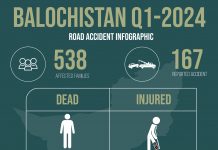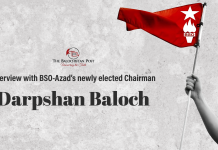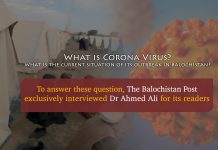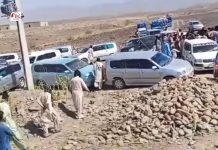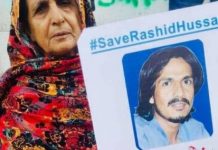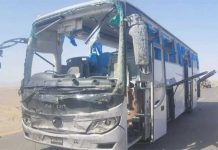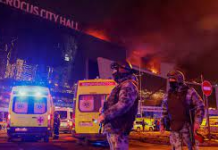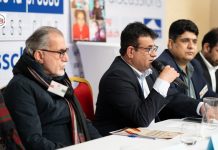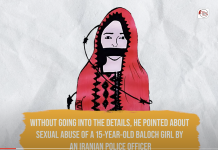Author: Zaarain Baloch
The Inter-Services Public Relations (ISPR) claimed in a media statement that the Pakistani forces had carried out a “search and rescue” operation in the Ziarat and Harnai region to save an army officer abducted by the Baloch Liberation Army earlier that day. ISPR claimed that the forces, assisted by SSG commandoes and military choppers, had spotted 6-8 “terrorists” fleeing to their hideouts in the mountains along with the abducted army officer. The forces had intercepted the insurgents to save Lt . Colonel Laiq Baig Mirza, the abductee, and a gun battle had broken out between the two groups. ISPR said that the insurgents, realizing they cannot escape, had killed Mirza. A shootout had broken out where at least nine insurgents were killed, the ISPR said. But there is a problem with this claim – rights groups argue that the alleged insurgents were Baloch missing persons who were picked up from different areas of Balochistan and kept in custody for years. Their names were on the Baloch missing persons’ list, and their families have asked for their safe release countless times in media statements, missing persons camps and demonstrations.
Soon after the photos of the slain men surfaced on social media, they were identified by their families and confirmed as missing persons by the Baloch human rights groups. The Baloch “pro-independence” groups categorically denied having any connection to the slain men. Five of the victims were picked up from different areas of Balochistan, allegedly by the Pakistani security forces. Balochistan Home Minister Zia Langove also confirmed that five of the nine victims had their names on the missing persons’ list prepared by the Voice for Baloch Missing Persons(VBMP). VBMP Chairman Nasrullah Baloch also confirmed that the five victims were Baloch missing persons.
The news of the alleged “fake encounter” spread like wildfire on social media, sparking outrage and anger. Activists, human rights workers and Baloch nationalists condemned the killing of the nine men and said that the Pakistani state is systematically killing the Baloch missing persons. Activists carried out campaigns on social media, demanding justice for the victims and their family members. Thousands of social media users participated in the online campaigns, and the hashtag #StopBalochGenocide trended on Twitter in Pakistan for several hours.
The families of victims carried out a protest in the provincial capital Quetta on Thursday against the “fake encounter” of their loved ones. Protestors in Gwadar also hit the streets to demand justice for the victims and their families. A wave of condemnations poured in from the political parties, human rights groups, student leaders and activists, demanding a thorough investigation into the Ziarat incident and the prosecution and punishment of the culprits. Hundreds participated in the funeral prayers of the victims who were laid to rest in their hometowns.
VBMP Chairman Nasrullah Baloch identified one of the nine victims as Shams Satikzai, who had been abducted twice and released before being picked for the third and final time. Satikzai was reportedly detained by the Pakistani forces in 2017, but his family did not approach the VBMP and the missing persons’ commission because they had expected that he would be released like how he had been in the past.
Another victim was identified as Engineer Zaheer Baloch, a native of district Khuzdar, who was “abducted” in October 2021 from the Airport Road in Quetta. Zaheer’s family sources lodged a First Information Report against his “illegal detention” in Quetta and also appeared in the Balochistan High Court for his release. Their last hearing was on June 22, 2022, and the court had fixed the date of the next hearing for July 28. His family members had also filed an application in the missing person commission of Pakistan for his safe release.
Nasrullah Baloch identified the third victim as Shehzad Baloch, a native of Kalat, who was reportedly detained in Quetta in June 2022, allegedly by the Pakistani security forces. His family had registered his name on the VBMP’s missing persons’ list and filed an application in the missing persons’ commission against his enforced disappearance.
The fourth victim was Dr Mukhtiar Baloch, who was also picked up from Quetta in June. The fifth victim, Salim Baloch, was reportedly picked up midway on his journey from Panjgoor to Quetta. There are also reports that the sixth victim, Shah Baksh Marri, has also been identified as a missing person, but as of writing, more details are yet to emerge.
What do the families say?
Uzma Baloch, the sister of the slain Engineer Zaheer Baloch, told The Balochistan Post that her brother was shot dead in a fake encounter. “We have evidence to prove that my brother was abducted from his office on Airport Road in Quetta in October 2021.” Uzma said that her family had promptly filed an FIR against the “abduction” of her brother. “I personally participated in demonstrations and protests, hoping my brother would be safely released. But I did not expect that I’d receive his mutilated dead body in return”, she said as her voice choked. Uzma said that she had filed a petition in the Balochistan High Court in Quetta and gotten a date for the first hearing on July 28, but before she could set foot in the courtroom, her hopes were smothered when she had to pick up the mutilated dead body of her brother from the civil hospital.
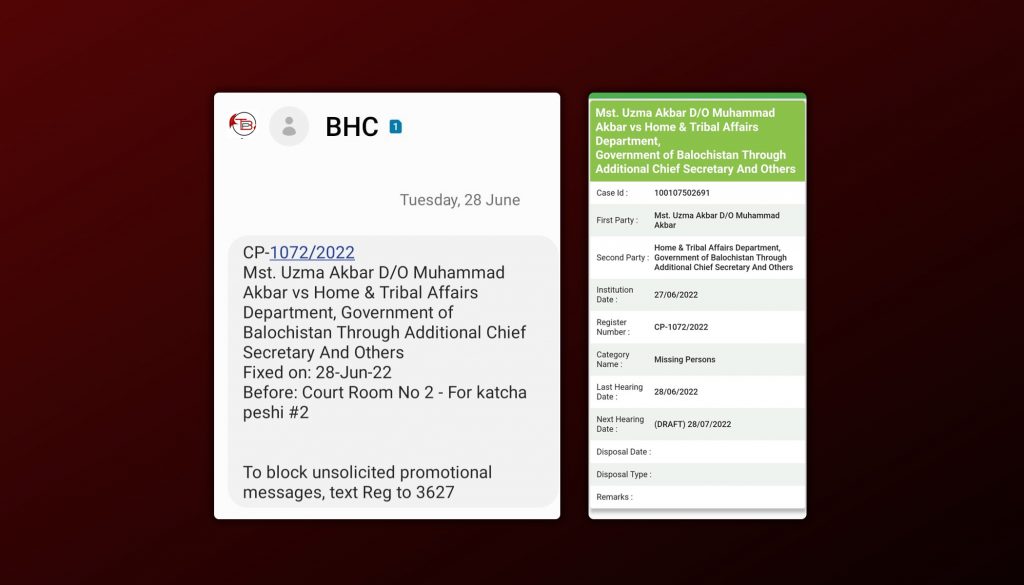
Zaheer’s lawyer in the court, Imran Baloch, told The Balochistan Post that there was enough documentary evidence and oral proof to prove in the court that he was “forcibly disappeared.” Bangulzai said Zaheer worked at a construction firm in Quetta when he was allegedly picked up by the Pakistani security forces. He said that the forces had followed Zaheer all day long before forcefully detaining him, and the episode was caught on CCTV. Bangulzai said that following Zaheer’s disappearance, his family members had lodged an FIR in October 2021 against his disappearance, almost ten months before he was killed in the alleged “fake encounter.”
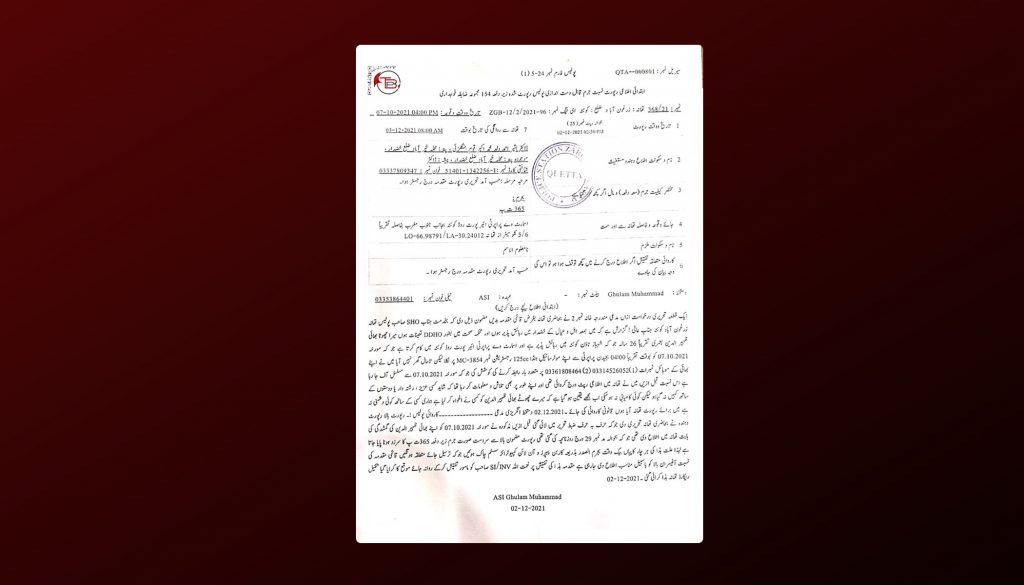
“Zaheer had a particularly strong case backed by substantial evidence to prove his innocence in court. And considering the fact that he was killed in cold blood, there is reason to believe that the other eight victims [of the Ziarat incident] were also innocent.” He said that the Zaheer’s family has observed handcuff marks on his wrists, rope marks on his hands and streaks under his eyelids, all of which serve to show that he was bound and blindfolded for a long time before being killed. He said that there is adequate forensic evidence to prove that Zaheer was not killed in military combat, but shot dead at point blank range. Baloch said that Zaheer’s family lodged a constitutional petition in court, and the court had informed the two parties that their next hearing would be on July 28.
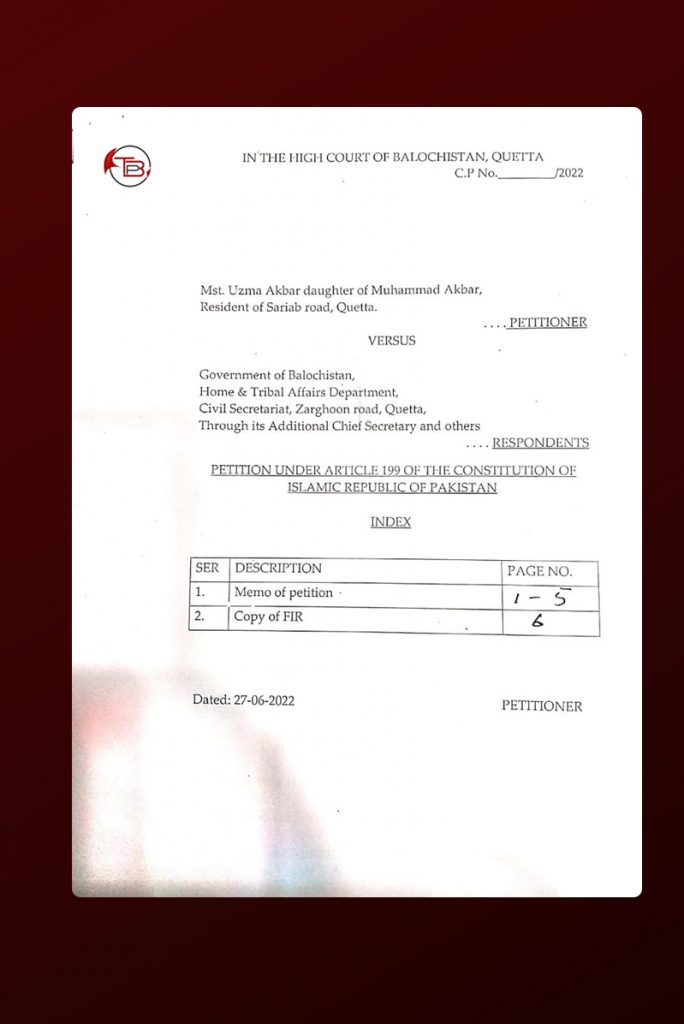
Abdul Hameed Baloch, the brother of slain Shehzad Baloch, another victim of the alleged “fake encounter”, told The Balochistan Post that he was “shocked” to hear the ISPR’s statement regarding the Ziarat incident. He said that they had lodged an application in the missing persons’ commission of Pakistan against the “enforced disappearance” of Shehzad and carried out press conferences and demonstrations for the safe release of his brother, but to no avail. “I visited police stations numerous times and met with the SP, the DSP and the SHO in this regard, but they did not even lodge an FIR against the enforced disappearance of my brother”, he said. “The real trauma for me and my family is that despite all our efforts, my brother, Shehzad, was falsely framed as an insurgent and martyred in a fake encounter… [The Pakistani security forces] rounded up and killed our loved ones only to hide their own catastrophic failures – these were not animals; they were living, breathing humans that they[forces] so brutally killed.”
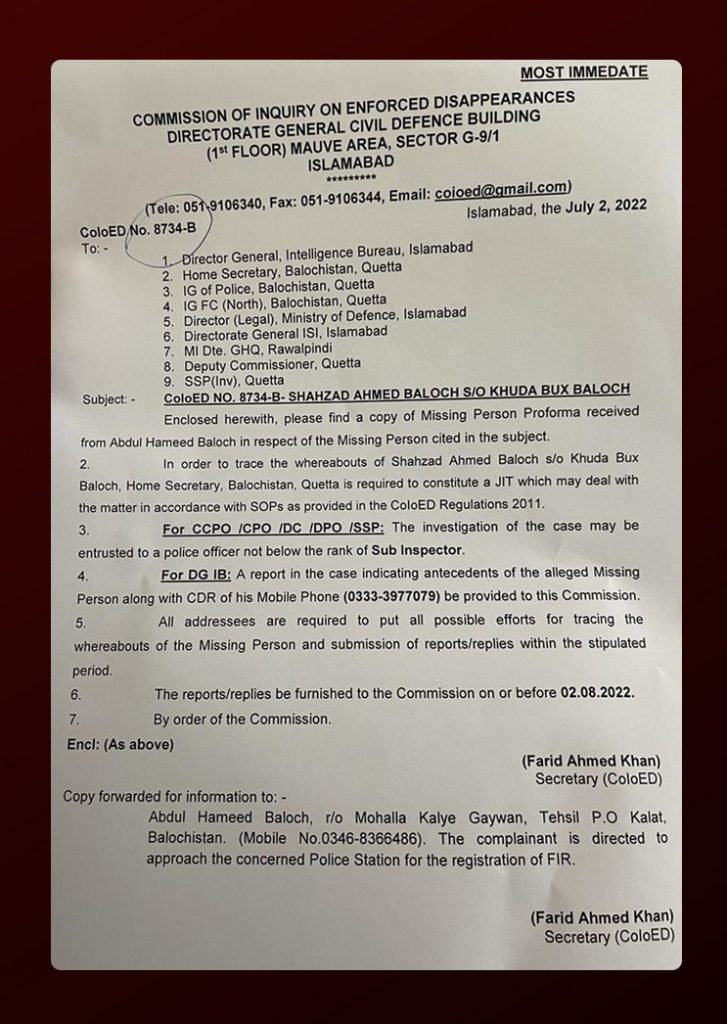
‘Inhumane, barbaric’
The news of the alleged fake encounter in Ziarat engulfed social media like wildfire, sparking outrage and anger. Activists, social workers, human rights groups, nationalist circles and student leaders vehemently condemned the incident and demanded justice for the slain men. The friends and family members of the victims said that their loved ones were killed in cold blood in a “fake encounter” and demanded that their killers be prosecuted and given the comeuppance.
Baloch politicians and mainstream political parties also raised the issue. BNP-Mengal chief, Akhtar Mengal, asked Pakistani Prime Minister Shehbaz Sharif for an impartial and thorough judicial inquiry of the Ziarat incident. The Interior Minister of Pakistan, Rana Sanaullah Khan, has reportedly agreed to Mengal’s demands and directed the government officials to investigate the incident. The National Party also condemned the killing of Baloch missing persons in Ziarat. The NP said this incident is a flagrant violation of human rights and international law. The NP said that such incidents portend a grim future and asked the Pakistani government to launch an inquiry into the Ziarat incident. The National Democratic Party (NDP) also condemned the Ziarat incident and said that the international human rights organizations must take notice of the “human rights catastrophe” unfolding in Balochistan and hold the Pakistani state accountable for its “crimes.” NDP also asked the Supreme Court of Pakistan to order a judicial inquiry into the Ziarat incident and bring the culprits to justice.
MQM leader and exiled politician Altaf Hussain also condemned the Ziarat incident. He said that the abduction and the subsequent killing of the Baloch missing persons cannot be tolerated. The MQM leader said that the Supreme Court of Pakistan must order a judicial inquiry into the Ziarat incident and fix responsibility on the culprits. Former Speaker of Balochistan Assembly, Waheed Baloch, tweeted that Baloch are living through the worst form of slavery in Pakistan. He said that only the Punjabi military can order the abduction and subsequent killing of the innocent Baloch people.
Activists and human rights groups were also upset over the Ziarat incident. Pashtun Tahaffuz Movement leader Manzoor Pashteen said that the killing of innocent Baloch missing persons in fake encounters is “horrifying.” He said that Pakistan’s supposed “war on terror” is based on such charades – fake encounters have become the new normal in the Baloch and Pashtun areas.
Student leader and activist Mahrang Baloch tweeted that the fake encounters of the Baloch missing persons equate to the genocide of the Baloch people. “[This incident] is a slap in the face for the political parties and the people who believe that the parliament and the judiciary in Pakistan are independent – you are all equally complicit in the Baloch genocide.”
The Baloch Yakjehti Committee said the execution of nine Baloch missing persons in a “fake encounter” is the epitome of injustice and cruelty. The group said that the family members of the slain individuals have participated in demonstrations throughout Balochistan. The security forces did not release their loved ones but murdered them in cold blood. BYC said that the government, political parties and the judiciary must get involved to put an end to this practice before it gets out of hand. Addressing the Chief Justice of Pakistan, the group said that the consequences of killing innocent people will be “grim and dangerous.”
The families of the victims of the Ziarat incident carried out a demonstration in Quetta on Thursday. They were joined by the Voice for Baloch Missing Persons, student groups, members of other missing persons and the general public. Carrying placards, banners and picket signs, the teary-eyed families marched on the roads of Quetta, chanting slogans and demanding justice for their slain loved ones. Families of other missing persons expressed fear that their loved ones would also meet the same fate.
The Quetta police violently charged the demonstrators with batons and tear gas, which injured numerous protestors and caused many others to faint. Women and children were caught in the thick of the violence – photos and videos of the episode shared on social media show distressing scenes; demonstrators running around as tear-gas canisters are hurled their way. In another video, the sister of missing Asif Baloch makes a plea – her voice choked with emotions, young Saira says that despite being seriously ill, the sister of slain Engineer Zaheer Baloch used to visit the camp daily, hoping that she would get justice but what she got instead was the mutilated dead body of her brother. “Will we also receive the dead bodies of our brothers?… For God’s sake, have mercy upon us”, she says.
A demonstration was also held in Gwadar against the “fake encounter” of the Baloch missing persons. Scores of individuals participated in the demonstration and demanded justice for the victims. They appealed to the authorities to deliver justice to the victims and their family members and fix the reasonability on the culprits.
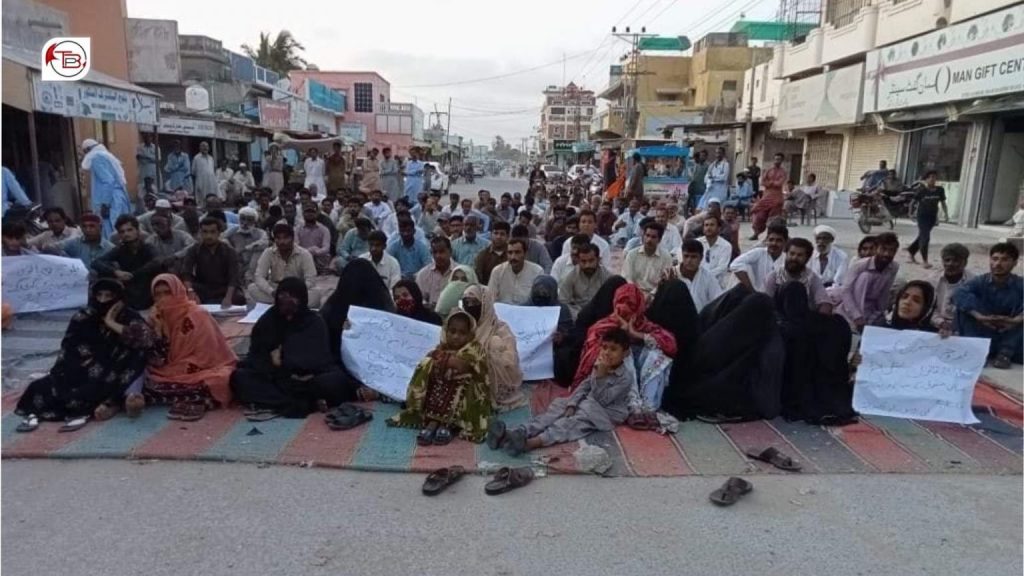
‘The Bloody Trail’
Ziarat incident is the continuation of the ‘bloody trail’ of alleged fake encounters that began in Balochistan in the past few years. The Pakistani security forces – especially the Counter-Terrorism Department (CTD) – have been accused of rounding up Baloch missing persons and shooting them dead at point blank range. The CTD has earned the sobriquet “the encounter specialists of Balochistan” due to the sheer number of “fake encounters” attributed to them.
In March 2021, the CTD claimed that it had killed five insurgents of the Baloch Liberation Army in an armed confrontation near Mastung. Two of the five alleged insurgents were Sami and Jamil Pirkani, two lads in their early twenties, who were reportedly picked up by the Pakistani forces from Quetta in January. The remaining three victims – Arif Marri, Yousuf Marri and Shah Nazar – were also Baloch missing persons who were in the custody of the Pakistani forces. But despite the CTD’s claims, something did not add up – the five men were shot at point-blank range in the head, and no single personnel of the forces was even bruised in the alleged confrontation. Similarly, in June, the CTD claimed it had killed four suspected insurgents in Marwar, a mountainous area some 60km from Quetta. The slain men were later identified as Baloch missing persons who were picked up from different areas of Balochistan over the years. In August, the CTD claimed it had killed five alleged insurgents in a shootout, but subsequent investigations showed that the five victims were Baloch missing persons. Two of the victims, Jamil and Shoaib, were reportedly detained by the Pakistani forces from Quetta in March. Baloch activists claim that at least 20 captives were killed in Balochistan in “fake encounters.”
In August 2020, the CTD claimed of killing five alleged insurgents in Rajan Pur, but it was later revealed that the five victims were Bugti tribesmen who had been reportedly detained by the Pakistani forces. In 2018, CTD killed four people, including a woman and a five-year-old boy. “Were they also members of a pro-independence organization?” Baloch activists asked, but there was no official response; there was just dead silence.
A particularly odd case surfaced in September 2015 when Sarfaraz Bugti, then Home Minister of Balochistan, claimed in a press conference that two suspected militants were arrested by the Pakistani forces in Quetta. In a room filled with cameras, Bugti claimed that the two suspected militants – Shafqat Rodini and Ibrahim Nichari – were involved in 27 murders, including the killing of three journalists and the assassination of nationalist politician Habib Jalib Baloch. Bugti also provided a video clip to the media which showed one of the detainees confessing to his alleged crimes. A confession obtained from a prisoner by means of torture (or enhanced interrogation techniques) or other forms of duress is not acceptable in court, but Bugti forgot to mention that in the press conference.
Shafqat Rodini and Ibrahim Nichari – both political activists – were paraded on popular Pakistani news channels as “terrorists” and branded as members of the Baloch Liberation Army, a charge the group denied. The two detainees were later killed along with another man in an apparently “armed confrontation” in Kandawa near Mastung. The official account of the incident was ludicrous – the police said that Rodini and Nichari had identified a hideout of the Baloch insurgents, and one of the insurgents had opened fire on them and killed them. The police had then killed the insurgent in retaliatory fire. What’s strange about this account of the incident is that a Baloch insurgent had killed two of his suspected companions and not fired a single bullet toward the police.
Over the past few years, such incidents have become commonplace in Balochistan, and the family members of the Baloch missing persons are terrified that their loved ones will be falsely branded as terrorists and shot dead in the next “fake encounter.” Whenever the Pakistani forces claim that they have killed insurgents in a gun battle, the hearts of the Baloch women are terror-stricken that their fathers, brothers or sons might be among the victims, and their fears are almost always realized.
The alleged fake encounters of the Pakistani security forces follow a similar pattern. The Balochistan Post has reported and investigated numerous such “confrontations” over the years and found some common features which all these incidents share. Firstly, the slain individuals make an unusual profile for an insurgent – they have long, scruffy and unkempt beards, dishevelled clothes, shaved heads and underfed bodies. The Baloch insurgents, in contrast, usually have long hair, medium-length well-groomed beards and healthy bodies hardened by the guerilla lifestyle of a mountain dweller. Secondly, forensic pathology of the gunshot wounds on the victims matches exactly the characteristics of contact wounds and close-range wounds – the presence of muzzle-imprint on the skin; flame burns and singeing of hair; tattooing on the skin from metal scrapes and unburnt particles; soiling and reddening from the gas from the firearm; a smaller and regular entry wound but an unusual beveling of tissue on exit wound are common signs found on all the victims of these alleged fake encounters. All these signs point toward one conclusion: the victims are shot dead at point-blank range. Thirdly, the victims of these supposedly “armed confrontations” usually have handcuff marks on their wrists and rope marks on their hands, which suggest that the victims were bound for a long time before being shot dead.
But the common and perhaps most surprising element of these “armed confrontations” is the absence of any casualties on the side of the security forces. In the numerous such incidents that have been reported in Balochistan over the years, not a single soldier of the Pakistani forces is killed, injured or even bruised in these incidents. Except the recent Ziarat incident, where ISPR said that one of their forces’ personnel was killed in the combat. Given the facts which raise questions on these encounters, the death of that Pakistani forces’ personnel must be investigated as well.
Another questioning factor is that there are no signs of military combat – in the photos posted online, the forces are usually seen flanking the dead bodies of their victims in their crisp, perfectly-ironed uniforms and clean, oiled guns. One would expect that the security forces would at least have their uniforms soiled in an hours-long intense gun battle, but no such signs are observed.
The Pakistani Media – The Perfect Propagandist
Following the Ziarat incident, campaigns were carried out on social media platforms, and demonstrations erupted in different cities of Balochistan, including Quetta and Gwadar. But the Pakistani media apparently did not get the wind of it – the issue was barely touched by some news channels and newspapers while completely ignored by others. Taking a leaf out of the typical propaganda textbook, Geo News reported that one of the nine victims of the Ziarat incident, Salim Baloch, was, in fact, an insurgent. Citing a low-quality blurry video that purports to show Salim alongside Baloch insurgents, Geo News said that the nine victims were actually members of “pro-independence” groups, and their names were put on a “false missing persons’ list”, the same list that was presented in the Pakistani parliament by Akhtar Mengal and accepted by the government for further investigation. Following in on Geo’s footsteps, the Express Tribune, a leading English daily in Pakistan, published the word-to-word English translation of the same story, citing the same blurry video. Considering the torrent of news that the mainstream Pakistani media pours out daily, the volume of coverage Balochistan or the Baloch nationalists get is barely a trickle, and most of it is false.
The ‘bloody trail’ of the alleged “fake encounters” has continued for the past few years, and it shows no signs of slowing down any time soon. Human rights groups, Baloch activists and nationalist circles repeatedly accuse the Pakistani security forces of rounding up and killing the Baloch missing persons. Most of the victims do show the telltale signs of a missing person, from shaggy beards to shaved heads and thin, underfed bodies. And considering that the Pakistani forces don’t even get their uniforms dirty in these supposedly hours-long “intense armed confrontations”, there is reason to believe that such incidents have an unsettling element to them that needs a thorough investigation. If the allegations of the “fake encounters” are true, the international human rights groups need to get involved and take notice of the issue before it takes a turn for the worst. “If the world can raise its voice for Palestine, Kashmir and Burma, it should also raise its voice for Balochistan. Rights of one group should not be prioritized over the rights of another group”, one social media user wrote in the wake of the Ziarat incident.

